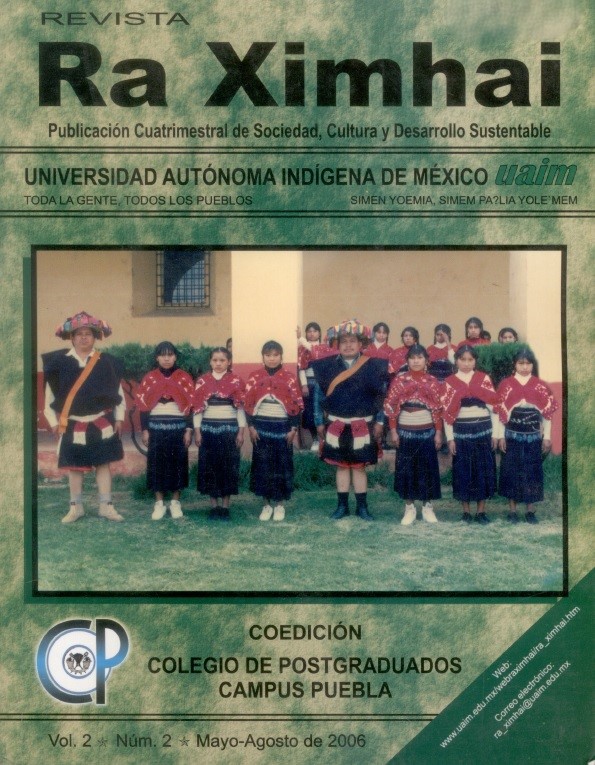The Moscamed program in the Mexico-Guatemala border region: some factors associated with its evolution and permanence
DOI:
https://doi.org/10.35197/rx.02.02.2006.07.jmKeywords:
international fitosanitary campaign, mediterranian fly, border regionAbstract
The Moscamed Program in Mexico began its activities in 1977, as a result of the detection of an adult of this pest, which is one of the most devastating pests in fruit growing worldwide. Its operation can be divided into two periods: the first, from 1977 to 1982, characterized by the control and eradication of the pest; the second, from 1985 to date, characterized by the persistence of the program in a containment phase on the Mexico-Guatemala border. The main objective of this research was to describe the main characteristics of the Moscamed Program, the variables that explain these characteristics, and the implications for regional fruit growing. The type of research is historical-descriptive; a selective sampling of key informants was basically used, and structured interviews were applied. The results indicate that the study period is characterized by a continuous presence of outbreaks, with the greatest number of them being found in the years from 1992 to 1995; and a decrease in resources assigned to the program's activities. The first period presents an average of 11.86 million dollars annually, while the second period observes 5.25 million dollars. Negative attitudes towards the program were detected in 26% of the interviewed producers; 93.3% stated that they were unaware of the objectives and benefits of its presence and 33% were unaware of the activities it carries out, which explains the indifference and low participation of producers in the program. The variables that explain the persistence of the program in the analyzed period are: the presence of the pest in Guatemala; the plantation production systems that are practiced in the region, the immigration of Guatemalan workers who come from infested regions and the aforementioned decrease in resources. The absence or low prevalence of the pest in the region has not caused effects on the surface occupied by fruit trees and there is no influence on the consumption of fruit species. Based on the results found, it is advisable to design a dissemination campaign on the objectives, activities and benefits of the program, as well as an eradication campaign for Guatemala and Central America and an increase in the resources allocated to the program.
Downloads
References
Bassols, B.A. 1993. Teoría. El conocimiento de las regiones. En Lecturas de Análisis Regional en México y América Latina. Compilador: Héctor Ávila Sánchez; Universidad Autónoma Chapingo, México.
Castillo, M.A. y Casillas R. 1989. Características básicas de la migración guatemalteca al Soconusco, Chiapaneco. Estudios Demográficos y Urbanos. Vol. 3, CEDDU, El Colegio de México.
Castillo, M.A. 1989. Contexto regional y migraciones a la frontera sur de México.
Estudios Demográficos y Urbanos. Vol. 3, CEDDU, El Colegio de México.
DGSV. 1982. Manual sobre la detección y control de la mosca del mediterráneo.
Talleres Gráficos de la Nación, México, D.F.
Fábregas, P.A. 1996. Desde el sur una revisión del concepto de frontera. Revista Diálogo entre Fronteras; Consejo Nacional para la Cultura y las Artes; México, D.F.
Martínez, V.G. 1994. Plantaciones, trabajo guatemalteco y política migratoria en la Frontera Sur de México. Serie nuestros pueblos. Ocozocuautla de Espinoza, Chiapas.
Méndez, J.A. 2004. Sistemas de producción agrícola y migración: el caso de la región del Soconusco, en Chiapas, México. En Planificación territorial en países de Latinoamérica y Europa: de la academia a la práctica. Coordinador Roser Majoral Moliné. Publicaciones y Edicions de la Universitat de Barcelona.
Reyes, P. 1996. Estudio beneficio/costo de la Campaña Nacional Contra Moscas de la Fruta. X Curso Internacional sobre Moscas de la Fruta. Programa Moscamed Editores, Metapa de Domínguez, Chiapas.
Soriano, R.R. 1992. Guía para Realizar Investigaciones Sociales. Novena edición, Editorial Plaza y Valdés.
Schwarz, A.J. 1989. Current Programme in México. In fruit flies, their biology.
Natural enemies and control. A.S. Robinson and G. Hooper (eds).
Downloads
Published
How to Cite
Issue
Section
License
Copyright (c) 2006 José Arturo Méndez Espinoza, Néstor Estrella Chulím , Javier Ramírez Juárez

This work is licensed under a Creative Commons Attribution-NonCommercial 4.0 International License.
Usted es libre de:
- Compartir — copiar y redistribuir el material en cualquier medio o formato
- Adaptar — remezclar, transformar y construir a partir del material
- La licenciante no puede revocar estas libertades en tanto usted siga los términos de la licencia
Bajo los siguientes términos:
- Atribución — Usted debe dar crédito de manera adecuada , brindar un enlace a la licencia, e indicar si se han realizado cambios . Puede hacerlo en cualquier forma razonable, pero no de forma tal que sugiera que usted o su uso tienen el apoyo de la licenciante.
- NoComercial — Usted no puede hacer uso del material con propósitos comerciales .
- No hay restricciones adicionales — No puede aplicar términos legales ni medidas tecnológicas que restrinjan legalmente a otras a hacer cualquier uso permitido por la licencia.








